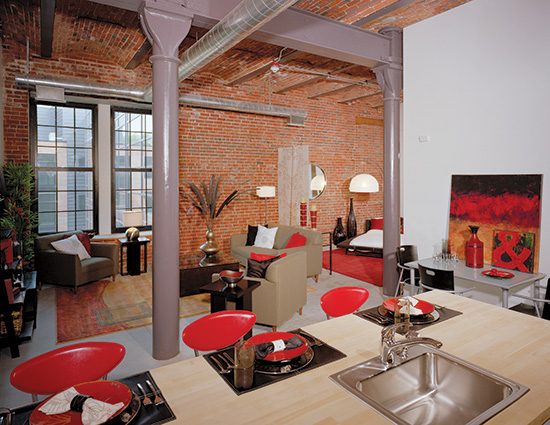Achieving Higher Quality in High-Density Residential: the Strengths of Structural Steel
Establishing Design Goals
In the apartment and condominium market, real estate trends are a key factor in influencing the program needs and design of a building. As part of a market that caters to a variety of end users, high-density residential buildings increasingly require a fast track project design and construction schedule. Structural steel is similar to a kit of parts in which all the components come to the site ready for assembly and erection in nearly all weather conditions. Time is saved and labor costs are reduced with prefabricated structural components. The earlier an owner can occupy a building, the shorter the time required for construction loans with the added benefit of earlier revenue generation.
In addition, architects should not feel limited by the span and depth of the structural system. The programs for apartments and condominiums involve a wide range of unit mixes, room areas, and ceiling heights. Understanding the marketplace underscores the value gained when designing with structural steel systems to optimize space and flexibility, and allow faster building completion.
Plan for flexibility. The market trends of today may be vastly different from those 50 or just 15 years from now. Program design often requires a future plan for converting micro units to conventional units, or for modifying apartments into condominiums. Structural steel framing can handle subsequent changes in load requirements and can be reconfigured if needed, including new penetrations in floor deck systems without any need for the extensive time required for scanning to locate rebar or post-tensioning cables. Buildings often outlast current program needs and structural steel systems make them more adaptable over time.
Reduce the structural footprint. Steel columns take up less floor area than concrete columns, are higher in strength, and significantly lighter in weight. Thin floor systems, long-span deck, open-web joists, staggered trusses, and conventional beams with composite deck all offer solutions that can be used to reduce building weight overall. Cost savings are also achieved with decreased foundation loads. Providing larger clear space with maximum design efficiency leads to greater design flexibility and higher demands for occupancy to the owner’s benefit.
Maintain precision and quality. Since fabrication occurs off site, steel framing is created with tolerances typically measured in sixteenths and eighths of an inch, where competing systems have field construction with tolerances measured in whole inches. The fears of dealing with poor craftsmanship and creep with cast-in-place concrete, or creaky floors and shrinkage in wood-frame construction, can be eliminated by utilizing structural steel systems.










